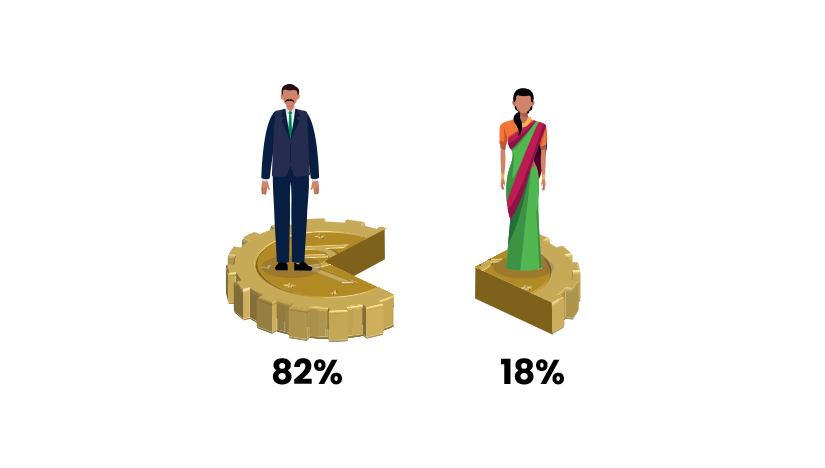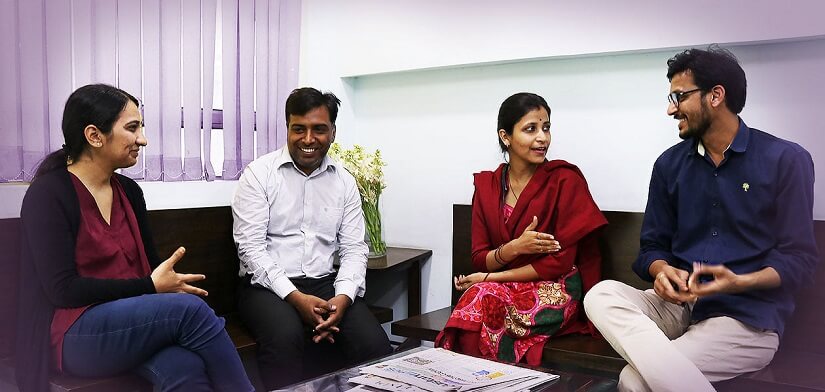Equal Pay for Equal Work: A Paradigm Shift

The Economic Survey 2022 shows that for every 1000 men in India, there are 1020 women. In a society so equally distributed among men and women, it is only logical that the contribution to national labor income is equal too.
But women in India earn just 18% of the labor income (incomes from work), while men capture 82%, according to the World Inequality Report 2022.
This means that for every 100 rupees earned in this country, women’s contribution amounts to a meager 18 rupees compared to men’s income. In fact, female labor income in India is lower than the average for Asian countries surveyed, which was at 27% in 2019.

Even though these statistics make achieving gender equity difficult, we must act now to prevent the current situation from getting worse.
Other than cultural changes at the very roots of our society, there are approaches adopted to close the gender pay gap at the workplace, two of which are:
- equal pay for equal work, and
- equal pay for work of equal value.
While these two concepts may look similar, they are inherently different in how they perceive women’s work.
The first approach advocates equal pay for women and men in the workspace, including basic salaries, non-salary compensation, bonuses, and allowances.
The second approach assesses the generated value to try and contextualize the employee’s contribution, regardless of gender. Put simply, women should also earn equal pay for entirely different work of equal value based on some objective criteria.

These objective criteria are based on skills, effort, levels of responsibility, working conditions, and qualifications. This approach can help correct the historical undervaluation of women’s labor.
Historically, the arrangement of patriarchal societies has marginalized women to be the chief participants in unpaid care work. Narratives of motherhood and femininity create stereotypes that limit women to perform such work in the name of duty, preventing them from participating in the labor market. And when they do work, women are not given access to high-paying positions.
In the current scenario, men continue to be overrepresented in higher-paid sectors and women in lower-paid ones. Data shows that women represent just 27% of all managerial roles, highlighting their absence in leadership positions. Further, only 5% of Fortune 500 CEOs are women.
International Response to Gender Pay Gap
Conversations around closing the gender gap have initiated actions globally and many countries have made notable progress. For example, Iceland ranks highest as the most gender-equal country in the world. The Global Gender Gap Report finds that Iceland has closed 89.2% of its gender wage gap as of 2021 and implemented policies that made this success possible. One such policy is the Equal Pay Certification. This policy, which went into effect in 2018, requires all companies with 25 or more employees to provide annual proof of equal pay for men and women and their gender composition. The government expanded it to further increase job satisfaction and transparency in the pay system. In fact, at the current relative pace, gender gaps can potentially be closed in 52.1 years in Western Europe.
Indian Response to Gender Pay Gap
The Indian Constitution upholds ideals of equality, but the right to equal pay is not explicitly stated as a fundamental or even a constitutional right. However, there is some legislative groundwork around equal pay.
For example, The Equal Remuneration Act, 1976 (ERA) prohibits discriminatory pay scales for men and women performing the same work or work of similar nature. It also prohibits discrimination between men and women on the grounds of recruitment, including promotions, training, or transfer.
Another example is the Code on Wages, 2019 which takes gender equality a step ahead by prohibiting discrimination on the grounds of gender, thereby including the LGBTQIA+ community.
However, even though legislative directives are in place to prevent the gender gap from widening, the Global Gender Gap Report 2021 shows that South Asia closed the gender gap only by 62.3% in 2022. This lack of progress extends the wait to close the gender gap to 197 years, implying that generations of women that haven’t even been born yet, will not be treated equally in the workforce.
We at Sambodhi are committed to maintaining an inclusive environment by creating equal opportunities for talent to excel and ascend the ladder of success. Over the last two years, Sambodhi has hired more than 55% female employees across levels. Creating this kind of gender-neutral environment makes Sambodhi a healthier and happier workplace, encouraging symbiotic growth for the organization and its employees.

Measures taken by Sambodhi to eliminate the gender gap:
- Recruiting and retaining talented women employees
Sambodhi practices an unbiased recruitment process across levels and ensures that women are part of the interview panel. The recruitment process is based on assessing skills and competencies required for a particular role, where gender is never considered a qualifying factor. As a result, Sambodhi’s employee structure is made of 40% female strength compared to the 23% female ratio in India.
- Unbiased Performance Appraisal System:
The performance appraisal system in Sambodhi is based on the employee’s performance alone. Irrespective of gender, employees are rewarded based on their performance. Sambodhi cultivates equality by maintaining transparency in promotion, pay, and reward processes.
- Female Leadership
Sambodhi recognizes its female employees’ efforts and leadership skills by ensuring representation in leadership roles.
Cultural changes take the longest to take place. Addressing and resolving biases to achieve an equitable society will take the time it needs, but we must do what we can to accelerate the process. Thus, eliminating conscious and unconscious bias is central to reducing the gender pay gap. Gender pay equality will not only cater to women’s financial independence but will also benefit the Indian and global economies.
Shruti Chaturvedi – Assistant Vice President, Sambodhi
Akshat Goyal – Senior Manager, Sambodhi
Debjyoti Roy – Deputy Manager, Sambodhi
Leave a Reply
You must be logged in to post a comment.

